Grass Fed Beef
There has been enormous discussions about Grass Fed Beef these days, what is it, why do folks like it, and in general what’s different from “regular” beef. Let’s start at the back end of this and work forwards.
Cattle will graze (eat) many things that will help them grow, remain healthy, and ultimately turns into fat/muscle which is what we eat. Much like humans, we need to eat food to live, grow, and stay healthy – not too surprising. Mass produced beef will be fed many unpleasant things, filled with hormones and antibiotics all to get more “yield” from the cattle. Yield is the percentage of meat they get from a cow. Higher yield = higher profits. The unpleasant things can range from pesticide laden fields, corn, grain, and even other animals and animal byproducts. The theory behind grass fed beef is that it’s a healthier way for a cow to eat and grow, but comes at the expense of less fat and as a result higher cost. If you buy bargain beef, $2.99/lbs beef is most surely quite poor quality, the animals are treated incredibly poorly (which is a discussion for another time), fed literally anything that is cheap, and when processed they put whatever meat filler they can to get maximum yield. You’re savings comes at a cost, to the animals and to what you’re eating.
More premium beef is fed grain/corn, or some other full vegetarian diet, no hormones or antibiotics are used to manipulate the animals to create more meat than they naturally would. While taking yet another step in the healthier direction comes grass fed beef. Which is fed a diet exclusively of grass, sometimes referred to as pasture fed. Some of the bargain beef is “grass fed” but not exclusively, so if you want the full grass fed beef experience and benefits you’ll want to find beef that is 100% grass fed and finished, meaning the last few weeks of the cattle’s life it continues to eat a diet of exclusively grass. There is some debate how this affects the final product, some feel finishing with corn is the best of both worlds, but we are focusing on grass fed beef today.
The benefits to you of eating grass fed beef is that it’s not just lower in fat than other methods of feeding cattle, but the fat that is there is much healthier. Which is why grass fed butter is so popular these days as well. But now you’re wondering if it’s worth it, as fat is where the famous beef flavor comes from, this is the same concern I had. Admittedly I put off trying grass fed beef for a long time because of this. I’m an old-school rib-eye guy, so I really like the classic beef flavor. The answer is difficult, but worth exploring. It really depends what is important to you, if healthier options are important then absolutely give it a try, if you’re looking on a small twist on beef give it a try, if you’re simply curious try it, if you are only driven by the price then it’s probably not worth it, if you want a steak with USDA Prime quality marbling grass fed beef is not for you. For me, if I feel like a steak or burger, but want to be healthier and feel better about what I’m eating then it’s a total winner. If I’m looking for that classic beef flavor, I’d probably lean towards a USDA Choice or Prime, or dry aged steak, preferrably corn fed or finished.
To dispell some of the myths about grass fed beef, it is NOT tough, it is not dry, it does not taste funny, and while cooking is important I feel that’s true of every cut of beef. Below are some pictures of a 100% grass fed top sirloin I made.
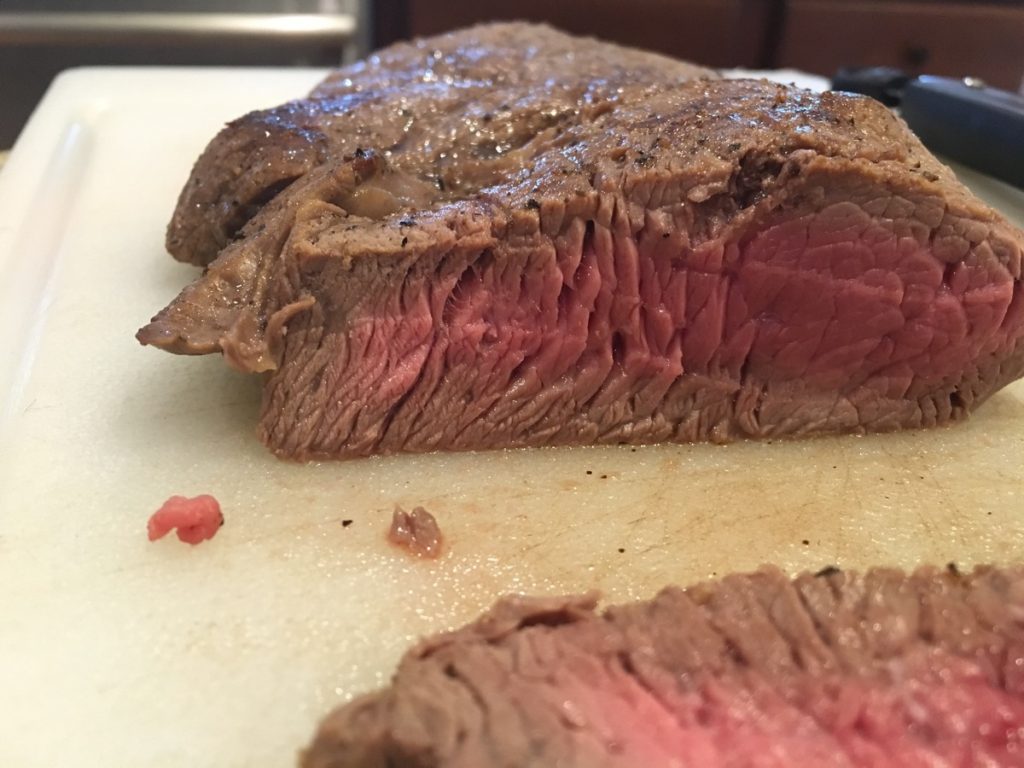
Trying to capture the purest beef flavor I went for a very minimal amount of seasoning. It was simply seared on a medium-high temperature in a cast iron skillet for about 2-3 minutes per side. I lightly salt and peppered the room temperature steak just prior to cooking and had a light coating of canola oil in the pan. After cooking I let it rest for about 10 minutes on a foil tented cutting board. As you can see this grass fed beef is was extremely tender and juicy. Top Sirloin is a great universal cut in that it’s not super fatty like a rib-eye, it’s kind of a cross between a filet mignon and a NY Strip, and typically at a much lower price than either! Even with a leaner cut this steak was melt in your mouth tender, with plenty of natural juices for flavor.
As for the flavor, it really didn’t taste much different than a regular steak, it was maybe a drop leaner, but it still had that classic beef flavor with no off or funny flavors. I’ve tried several cuts of grass fed beef, and with the exception of a grossly overcooked ribeye (sorry ribeye, that was entirely my fault) they were all as you would expect, a premium tasting steak. I will warn you, you cannot shop with your eyes like you do for other steaks, this top sirloin looked very boring raw, I wish I snapped a picture! But the finished product was great.
I highly recommend trying grass fed beef if you haven’t already, with no more attention than you’d show any other cut of beef you can have a healthier option and still satisfy that craving for meat. With all of that said, if I knew I was going to have one final steak in my life, I’d opt for a USDA Prime, corn finished rib eye, there is a creaminess to the beef from the high fat content that I’ve yet to experience with a grass fed steak.

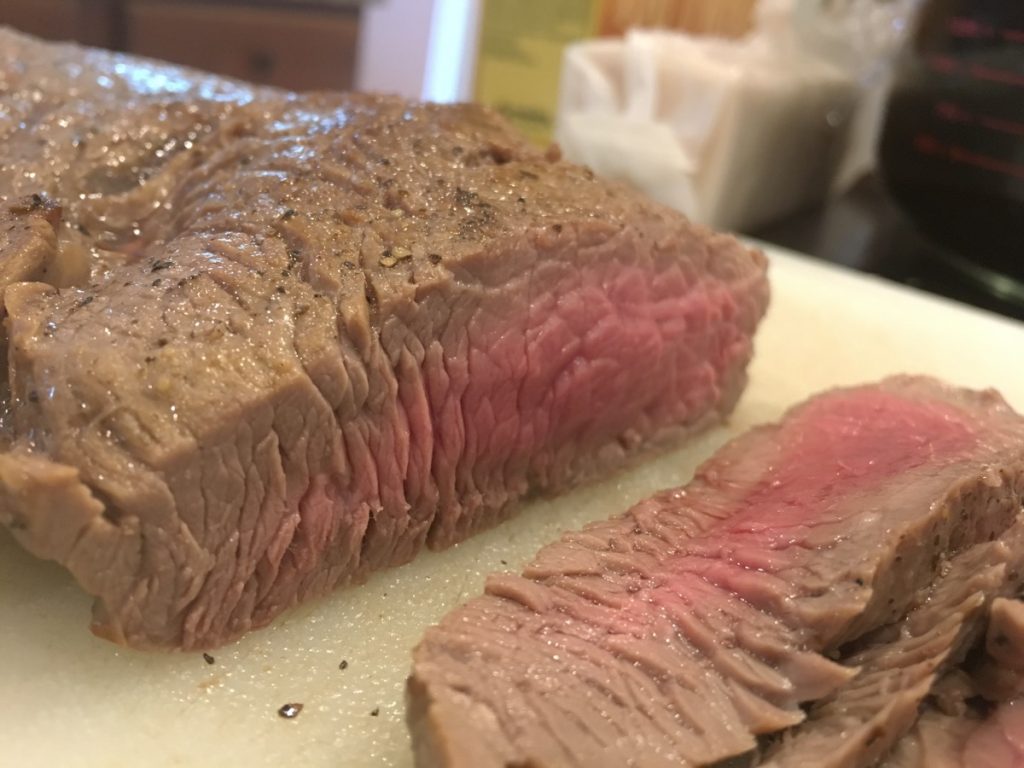





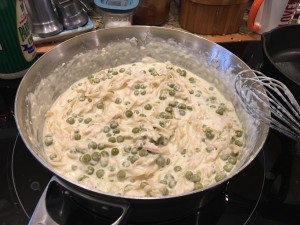
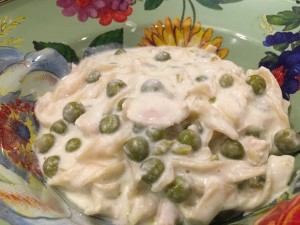
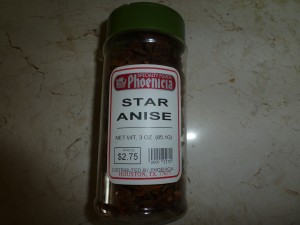
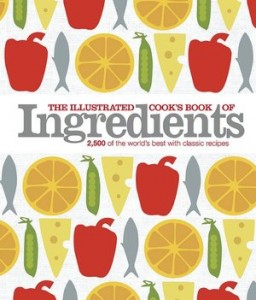

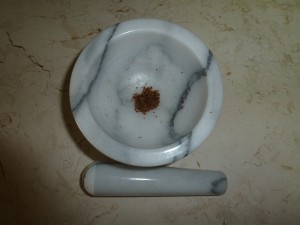
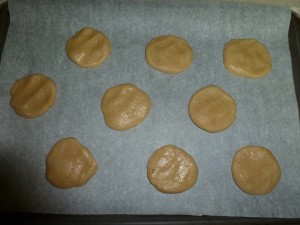
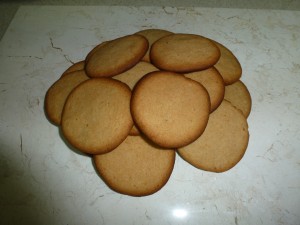
Follow Us!